I mentioned earlier this year that I’ve been making fresh goat’s cheeses, like Feta, Halloumi and Chèvre. Do you recall me saying “It doesn’t seem amazingly hard (so far)”?
So how hard can it be™ to make an aged cheese? Can you guess?
Drunken Goat
As soon as I heard the words “Drunken Goat Cheese” I knew I had to make this one. You may also have seen this called Cabra al Vino. It’s basically cheese that is soaked in red wine before it is aged. Sounds amazing, right?!
I compared two different recipes for this one, and ended up mostly following the instructions in the second (there is a lot of detail with pictures on cheesemaking.com):
- Recipe from The Beverage People
- Recipe from cheesemaking.com
The make itself went really well, to the point where it smelled fantastic and I couldn’t wait to try the cheese! The only hitch being that I’d need to age the cheese for a few months before it would be ready to eat.
Easy, right?
To age a cheese you need a place that is both humid and cool. Not as cold as a typical fridge, and a whole lot more humid (about 85% is perfect).
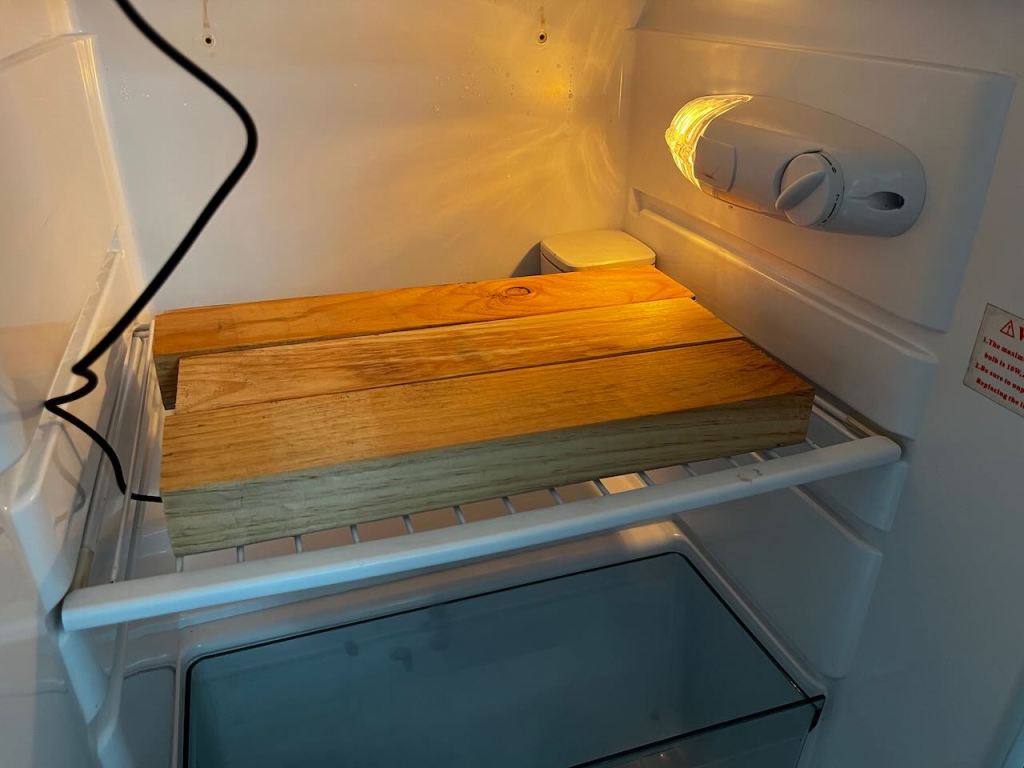
So I built a cheese cave!
It’s an old bar fridge (the kind without any auto-defrost features) with the freezer shelf removed.
I’m using some pine boards that I washed with vinegar and left in the sun for a few hours as a place to rest the cheese.
I keep it at about 11ºC using an InkBird thermostat power point gadget (no need to hack the fridge, the temperature sensor just slips inside the door seal and the power is switched off and on if the fridge gets too cold or warm).
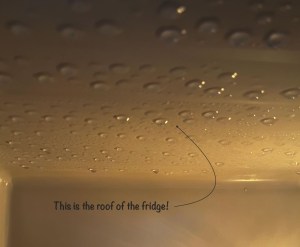
The trouble is, the “cave” sits at about 100% humidity when there’s a moist cheese inside, which is too wet.
Any cheese I put in here grows a lot of mould. 🤨
I couldn’t keep the mould on my Drunken Goat cheese under control, so I tried to work with the mould instead of against it. I attempted to put a schmier onto the cheese:
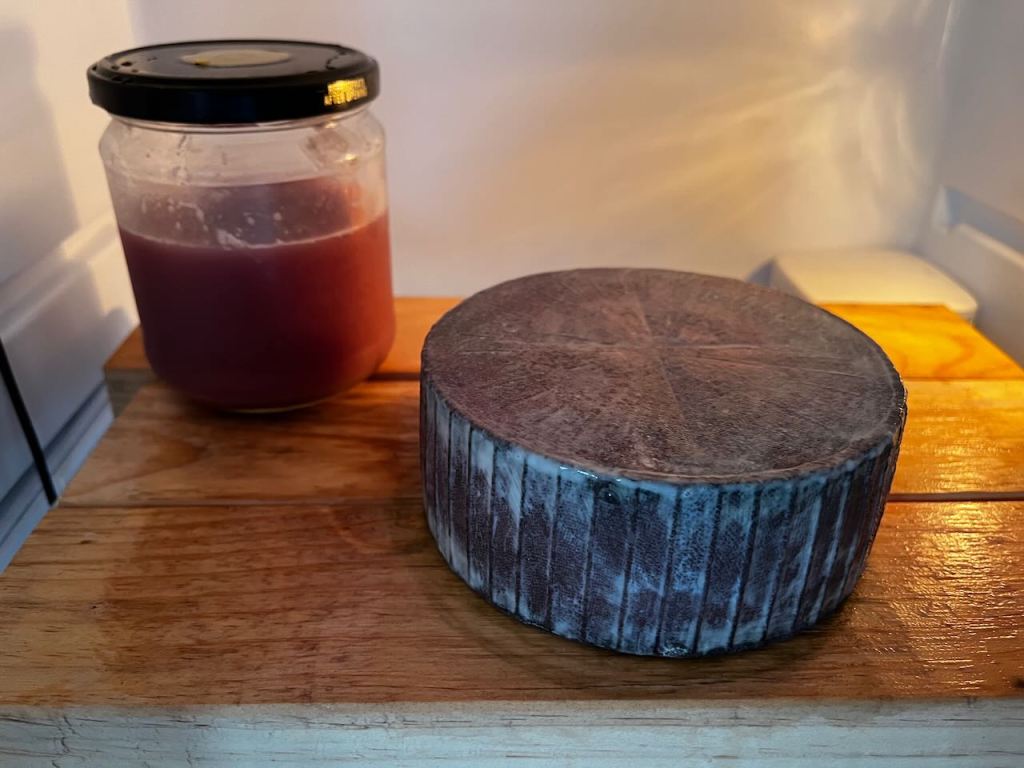
Every day I brushed some of the liquid in the jar (a weak red wine brine) onto the cheese and the boards underneath.
I flipped the cheese every other day.
This is meant to build up a layer of friendly bacteria that prevents mould from getting into the cheese.
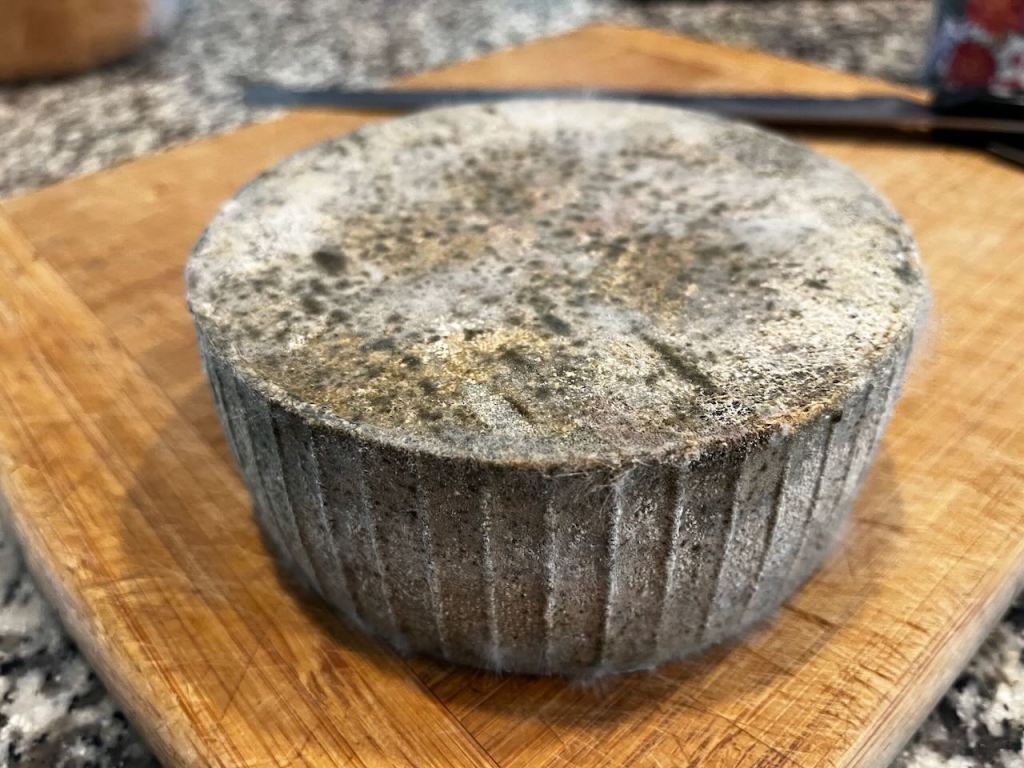
This worked, to an extent. Guess what: no mould got inside the paste of my cheese! However …
… my lovely Drunken Goat Cheese grew a huge variety of mould on the surface, some of which smelt awful (musty).
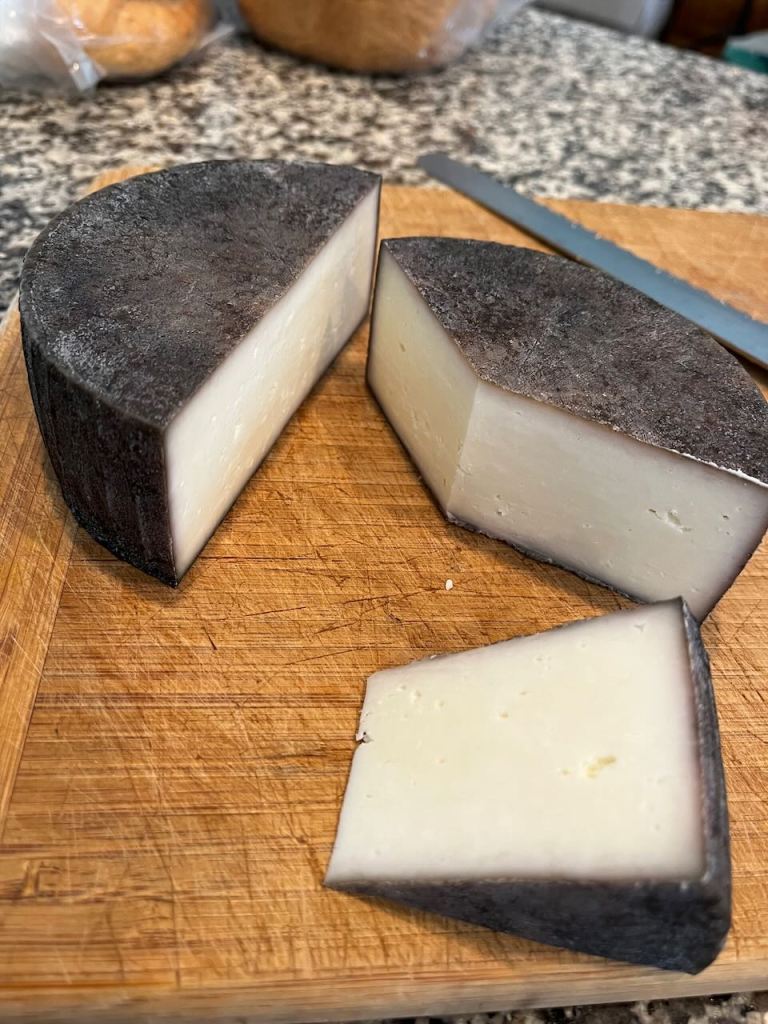
It cleaned up beautifully after I washed the mould away using white wine.
But it tasted (to me) too foul to eat! 😫
Besides the musty off flavours, the paste of the cheese was dry and tasteless.
Nothing like the soft and fruity flavour I was hoping for!
Colby
Shortly after I made the Drunken Goat cheese, I made a batch of Colby (from my Mad Millie cheese kit instructions).
I must have slept really badly, or taken a dose of forgetfulness with my breakfast muesli because this make went wrong in almost every way it could!
I heated the milk too hot in my double boiler before adding my culture and rennet. Oops!
The milk failed to flocculate for a whole hour (usually this takes less than 15 minutes), so I added more rennet hoping to save it. Oops! It instantly coagulated into a horrible grainy mess.
I soldiered on with the recipe regardless. I took exactly one photo of this cheese make, because by now I was expecting a total fail and was laughing at how badly this was going.
Eventually I managed to press the soggy bloop curd into a cheese shape and brined it (overnight, oops!) and then put it on the bench to start drying out.
About four days later I managed to get the cheese cave set up (oops, too long on the bench!) and popped it in to age with the Drunken Goat.
Yep, that puppy grew some pretty colourful mould!
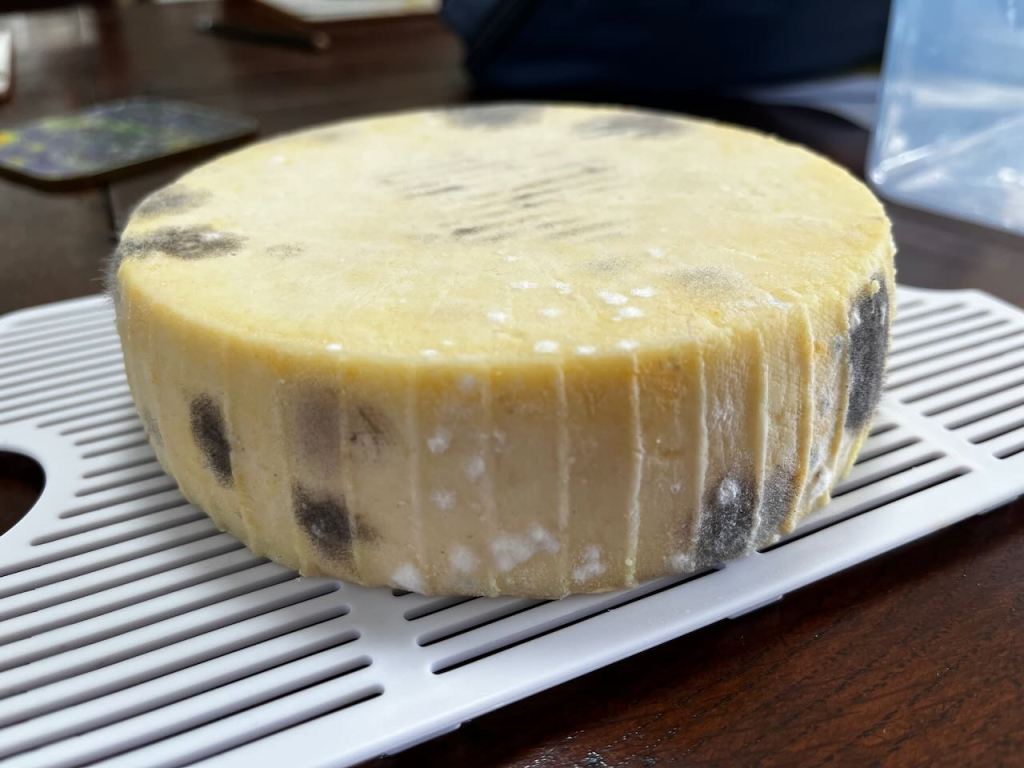
I gave up on it after a few weeks, took it out of the cave, removed the mould (with a saturated brine) and left it in the main fridge so it would stop growing mould. I neglected it for another two weeks, after it had dried out and cracked like crazy.
Oh, that cheese was a fail.
But Stephen ate it!
He said apart from the dry cracked bits, it was quite nice as a sandwich cheese. It even smelt faintly cheesy, so that’s something!
Emboldened by this “success” I decided to try a second Colby where I didn’t screw up the make. And this time I waxed the cheese to make sure there was no mould!
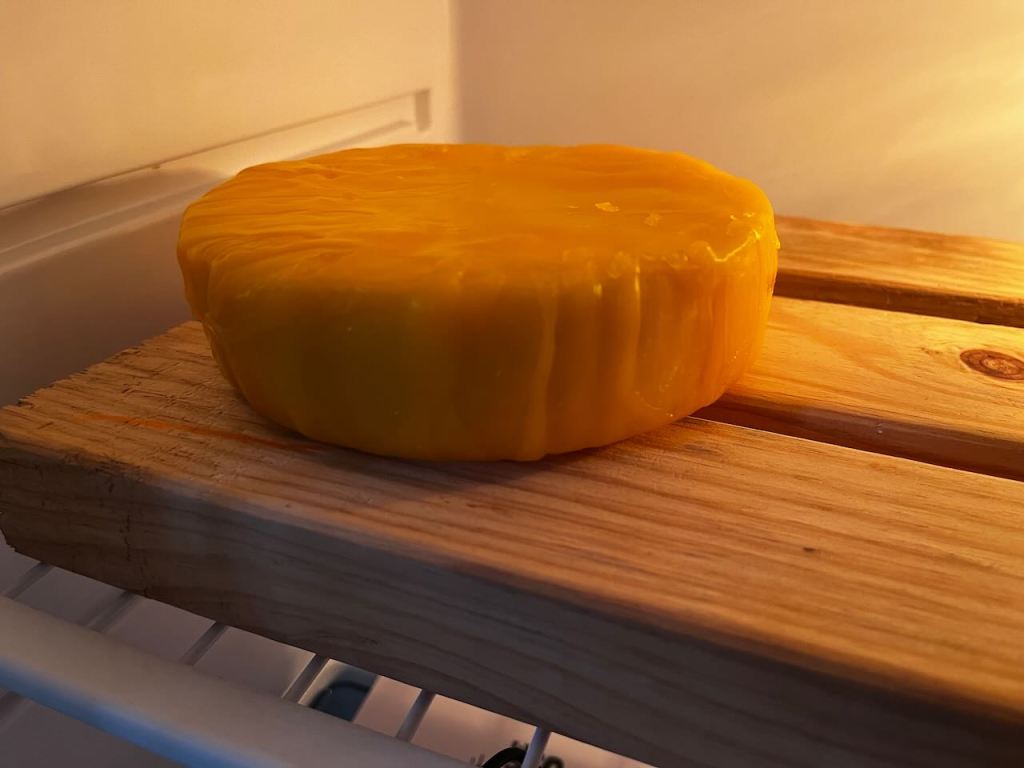
So, how did that go?
Yeah, nope. Last week it started to feel a little squishy inside the super thick layer of wax, so I decided to open it up.
It went “pfffft” when I pushed the knife tip in, letting a puff of gas escape.
That can’t be good!
The trapped gas could easily have formed as a by-product of Botulinum reproduction. No way are we eating that! ARGH! 🥵
So I guess this was the tale of three cheeses, really. And all of them were fails. 🤷🏼♀️
I’ll stick to my comfort zone and go back to making delicious Feta for now!
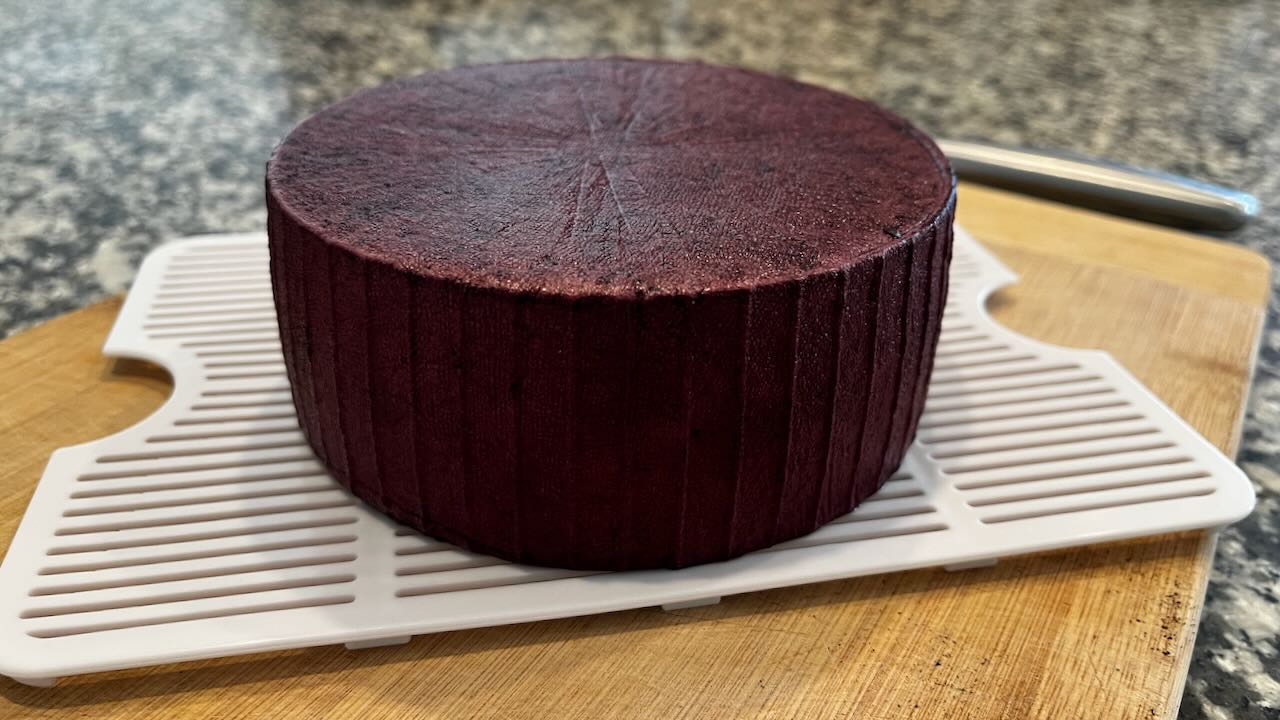
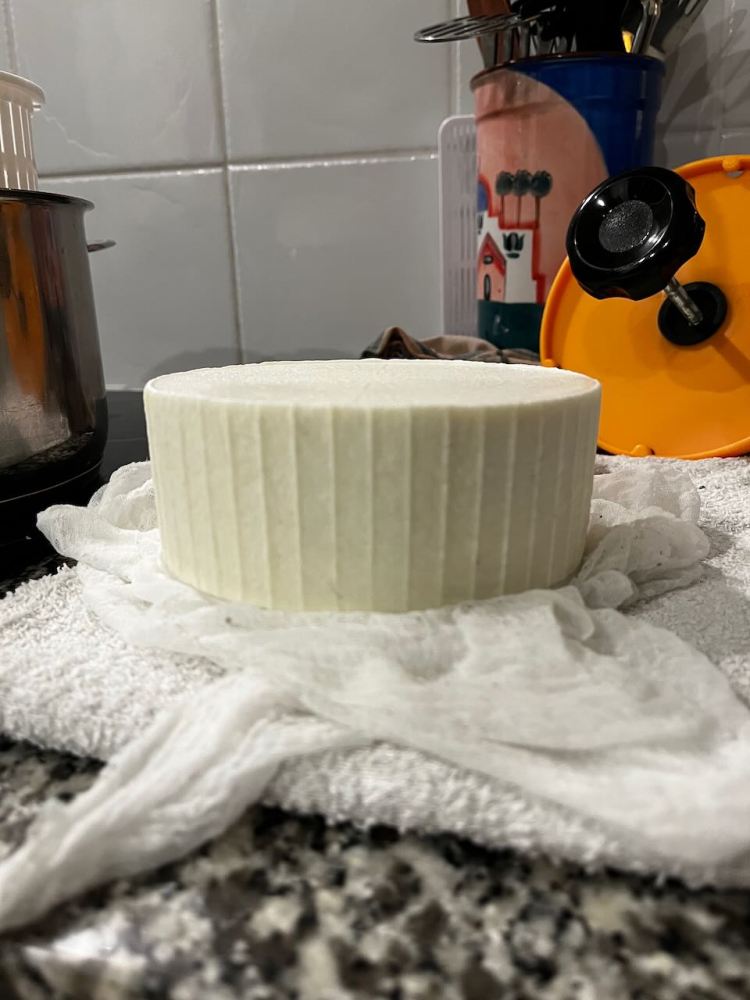
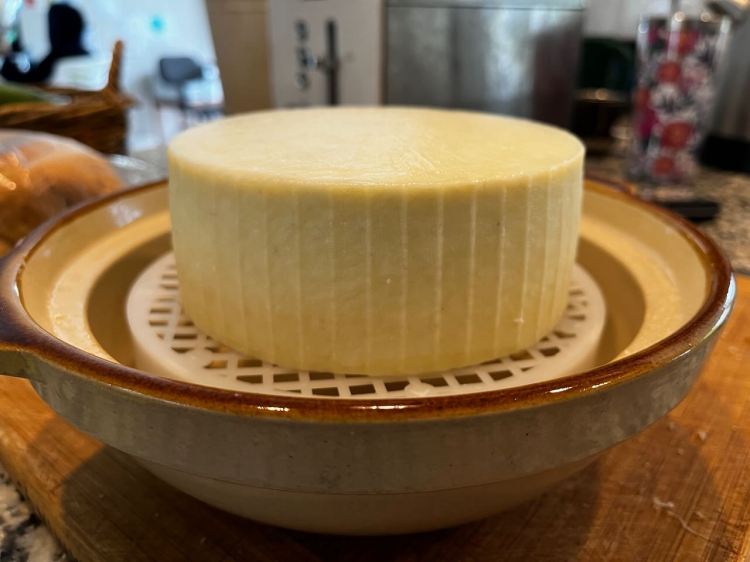
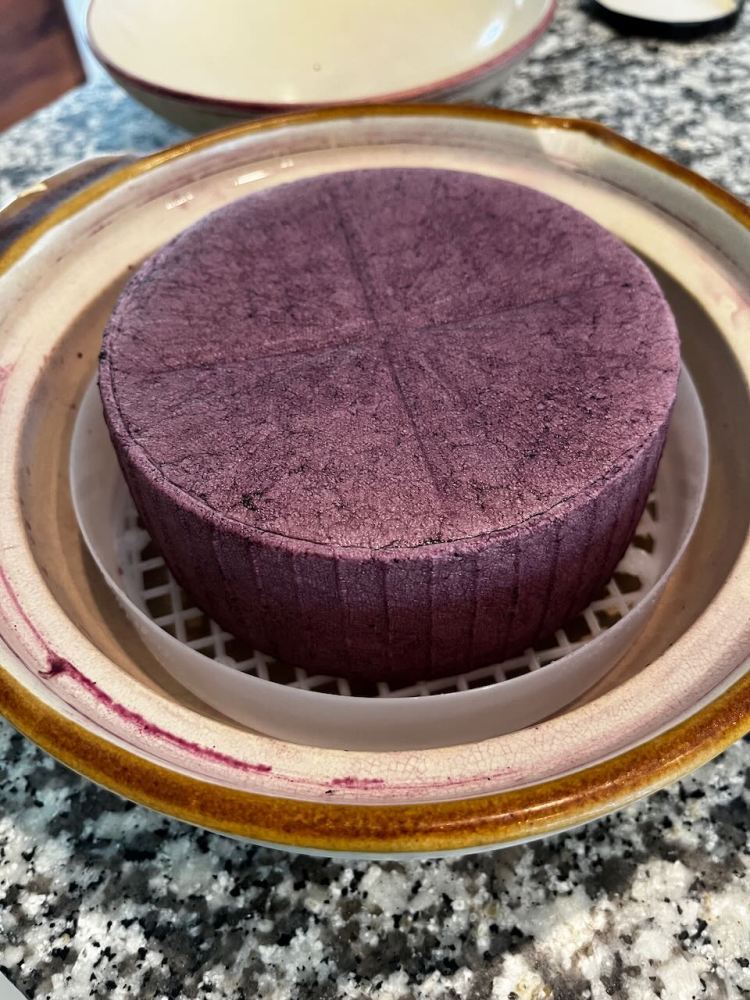
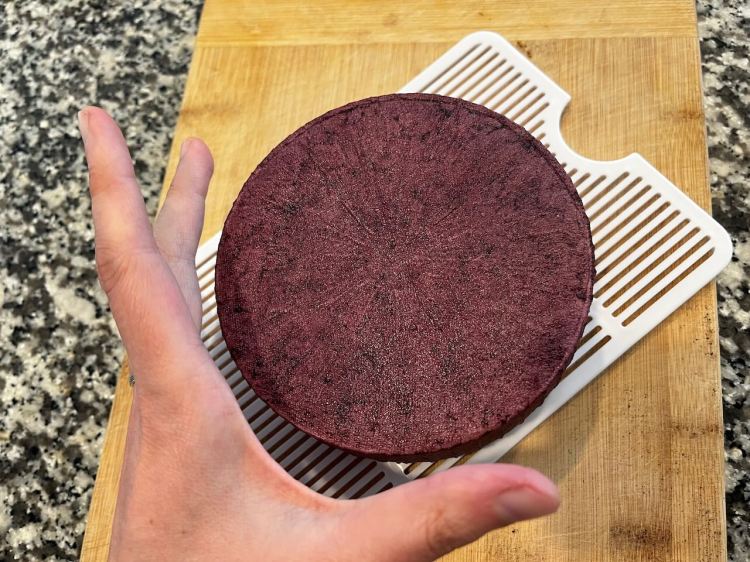
The drunken goat looked perfect.
LikeLiked by 2 people
I know!! And it smelled amazing, too (before aging). I’ll try again, but the goats have dropped to 500 mL a day, so probably not until next season (whenever we might get them in kid again).
LikeLiked by 1 person
Oh wow, Jess. What a shame, after all your hard work! I guess that’s why my favourite artisan cheese from our local providors is so pricey. Dad says that’s how cheese rolling competitions were invented.
LikeLiked by 1 person